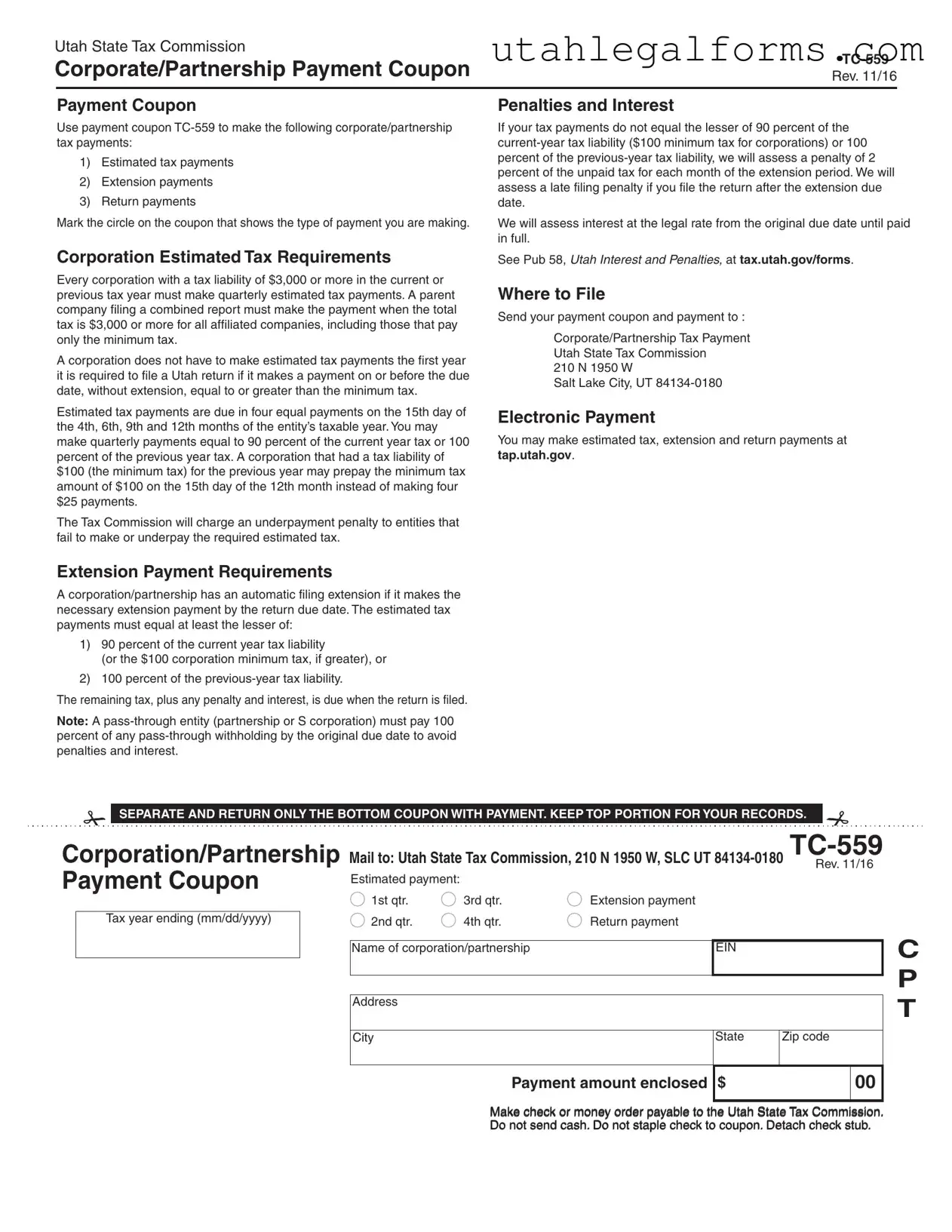-
What is the purpose of the Utah TC-559 form?
The Utah TC-559 form serves as a payment coupon for corporate and partnership tax payments. It is used for various types of payments, including estimated tax payments, extension payments, and return payments. By marking the appropriate circle on the coupon, taxpayers can specify the nature of their payment.
-
Who is required to use the TC-559 form?
Any corporation or partnership that has a tax liability of $3,000 or more in the current or previous tax year must use the TC-559 form to make their tax payments. This requirement also applies to parent companies filing combined reports for all affiliated companies.
-
What are the penalties for not making estimated tax payments?
If a corporation or partnership fails to make the required estimated tax payments, a penalty of 2 percent of the unpaid tax will be assessed for each month of the extension period. Additionally, if the return is filed after the extension due date, a late filing penalty may apply. Interest will accrue at the legal rate from the original due date until the payment is made in full.
-
When are estimated tax payments due?
Estimated tax payments must be made in four equal installments on the 15th day of the 4th, 6th, 9th, and 12th months of the entity’s taxable year. Taxpayers can choose to pay either 90 percent of the current year’s tax liability or 100 percent of the previous year’s tax liability.
-
What is the minimum tax amount for corporations?
The minimum tax amount for corporations is $100. If a corporation had a tax liability of $100 in the previous year, it can choose to prepay this minimum amount on the 15th day of the 12th month instead of making four quarterly payments.
-
How can a corporation or partnership obtain an extension for filing?
A corporation or partnership can obtain an automatic filing extension by making the necessary extension payment by the return due date. This payment must meet specific criteria, such as being at least 90 percent of the current year’s tax liability or 100 percent of the previous year’s tax liability.
-
What should a pass-through entity do to avoid penalties?
A pass-through entity, such as a partnership or S corporation, must ensure that it pays 100 percent of any pass-through withholding by the original due date. Failure to do so may result in penalties and interest.
-
Where should the TC-559 form and payment be sent?
Taxpayers should send the TC-559 form and their payment to the following address:
Corporate/Partnership Tax Payment
Utah State Tax Commission
210 N 1950 W
Salt Lake City, UT 84134-0180
-
Can payments be made electronically?
Yes, taxpayers can make estimated tax, extension, and return payments electronically at tap.utah.gov. This option provides a convenient way to fulfill tax obligations without the need for paper forms.
-
What should I do with the TC-559 form after completing it?
After completing the TC-559 form, detach the bottom coupon and send it along with your payment. Keep the top portion of the form for your records. It is important to make sure that checks are not stapled to the coupon and that cash is not sent.
